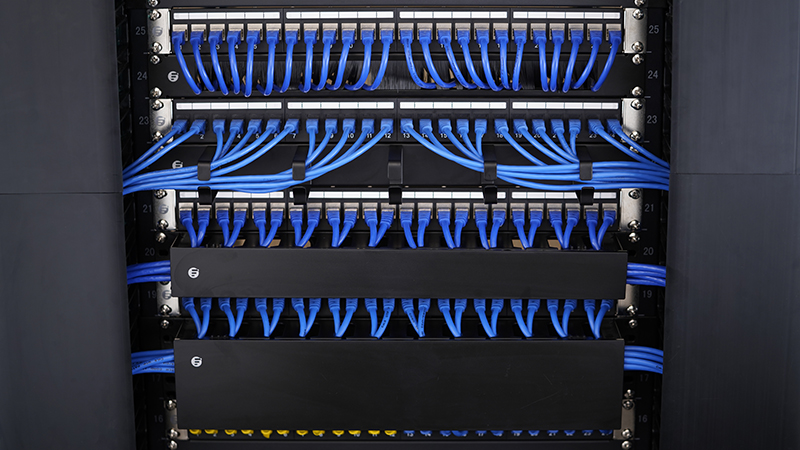Now we often need to deal with lots of cables when building up networks for data centers, offices, or homes. And it is best practice to use network patch panels for connecting these cables to various networking devices. However, there are still people who think this is redundant, unaware of the benefits of a network patch panel. Therefore here will have a thorough introduction to the network patch panel and its benefits, and give some tips on buying the best network patch panels.

What Is A Network Patch Panel?
The network patch panel is a passive mounted hardware assembly with multiple ports to connect and manage input and output cables that need to be connected to the networking hardware. It is usually attached to network racks, either above or below network switches or servers. Now there are many types of network patch panels designed for various applications. For example, there are Cat5e, Cat6, Cat6a, and Cat7 Ethernet patch panels for specific cable specifications. While according to the number of ports, 12-port, 24-port, and 48-port patch panels are also available. In addition, there are also unshielded and shielded patch panels, punch-down and feed-through patch panels.
Why Use A Network Patch Panel?
As mentioned above, a network patch panel servers as a static switchboard which connects numerous devices to a central server, switch or other critical hardware. If we don’t use it, we’ll have to run Ethernet cables from each device directly into the central hardware. Moreover, every time we want to reconfigure the network or cabling for more devices, it will be difficult for us to find out the right cables, unplug them and connect them to the new devices. Besides, network patch panels also benefit us a lot in the following aspects:
With network patch panels, all Ethernet cables can go into one central cabling location. This helps to keep the cabling system tidy and organized, avoiding cables from becoming tangled and messy. In addition, patch panels’ ports are often labeled, which allows us to better identify which cable comes from where.
Since all cables are terminated on the network patch panel, the switch or server won’t be disturbed when small changes are made with the cabling. Furthermore, these changes can be made easily and quickly. As for troubleshooting, the clearly labeled ports make it easier to locate cables which need to be tested or replaced.
As we all know, there is a risk of damaging the surrounding cables when adding or removing a networking hardware. However, the usage of network patch panels can greatly reduce the risk of unplanned outages by making it easy to add and remove cables without touching the main hardware.
How to Buy A Network Patch Panel?
When buying a network patch panel in the market, you’ll find there are many options in terms of styles, cable types, number of ports, etc. It’s easy task to decide which cable type you use and how many ports you need for your cabling. However, you’d better be careful in choosing between network patch panels for home and patch panels for enterprise network or data center.
If you want to buy a network patch panel for home or small office, an unshielded Cat5e or Cat6 patch panel with 12 or 24 ports is often enough. And for most home users, they often choose the punch-down panel rather than a feed-through one for its cheaper price. If you buy a punch-down one, you’ll need to wire the patch panel by yourselves. Further more, wall-mounted network patch panels are also popular for home networks. For enterprise network or data center users, it’s better to use rack mounted shielded 48 port Cat6a or Cat7 patch panels. And the feed-through ones are also suggested. For more information on buying punch-down or feed-through panels, read Should We Choose Punch-Down or Feed-through Patch Panel?
Related Articles:
How to Install Patch Panel and Switch?
How to Wire Cat5e Patch Panels?
Cat6 Patch Panel: Shielded vs Unshielded
48-port Patch Panel Recommendations



